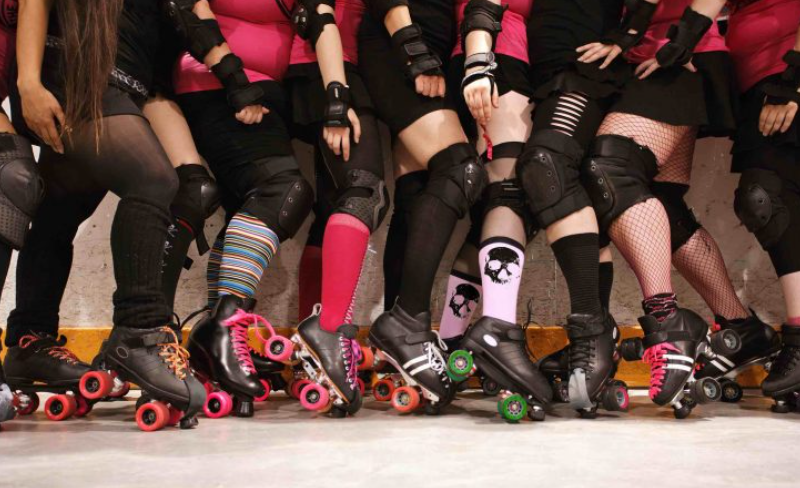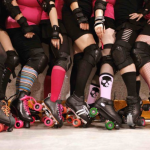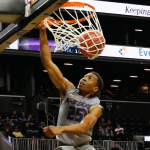
Few people know what roller derby truly is. In fact, most sports fans aren’t too familiar with the details of the sport either. Past the eye-catching uniforms and cool roller skating, what do most people really know about roller derby?
Despite public confusion, roller derby continues to rise in popularity. You might think that only women play this sport. However, more and more people are trying it out and, almost expectantly, falling in love with the roller sport.
If you’re interested in learning more about the sport, then read on for every beginner’s guide to roller derby. From its rules, team compositions, and equipment, here are the basics of roller derby!
What is roller derby?
To put it in simple words, roller derby is a type of contact sport. Some people think it is ice hockey on roller skates and without the ice. It is, in a way. However, roller derby differs from any other roller skating sport out there.
Like most sports, roller derby comprises two competing teams. These two teams face each other in a series of jams wherein each team has a jammer (known by a star on their helmet) who races through the track counter-clockwise. The goal of the opposing team is to block the jammer from passing their members. Of course, whoever scores the most points wins.
It can get a little difficult to understand at first, so let’s break it down a bit!
How did roller derby begin?
Roller derby is a relatively young sport. People credit the start of competitive roller derby to Leo Seltzer. In the 1930s, he created the Transcontinental Roller Derby. This was the first competitive opportunity for roller derby players in Chicago. Before then, roller derby was only beginning to take form. People would organize small-time roller skating races, and some even had audiences. It was in the late 1800s when roller skating became popular.
It then turned into a contact sport. The Transcontinental Roller Derby became successful, and the media started televising the game. Audiences increased in number, and a National Roller Derby League (NDRL) was formed in 1949. Unfortunately, this popularity sizzled. Professional roller derby took a backseat to other favored sports during the late 1900s. However, the flame didn’t go out. Come the 2000s, roller derby resurfaced in Texas as an all-female amateur sport.
Today, there are now more than 2,000 amateur roller derby leagues. From Texas, roller derby also became popular in Canada, Australia, France, and many other countries. In 2009, the Women’s Flat Track Derby Association (WFTDA) arose. It is the international governing body for roller derby.
What equipment do you need to play roller derby?
As with any other sport, roller derby has its own sports gear. Without them, players will not be allowed on the track. These include skates, helmets, and other protective gear.
Skates
In ice hockey, they have rollerblades. In roller derby, they use roller skates. Players must use quad roller skates. These are roller skates with four wheels, two in the front and two in the rear. Women’s roller skates are usually “fashion over function.” Thus, it is important to find those that are durable. When shopping for a pair, it is important to specifically look for roller derby skates and not ordinary ones.
The USA Roller Sports specifies players can only use quad roller skates. This is to ensure their safety. First, quad skates provide better balance on the track. Second, it places less stress on a player’s feet and ankles. Last, they provide more grip, which is important for skating laps.
There are other kinds of skates, such as inline roller skates. Inline skates have 2 to 5 wheels in a single line in the middle. However, only referees can wear inline skates. Even so, referees usually opt for quad skates too.
Protective Gear
All skaters have to wear a helmet, knee pads, and elbow pads. They should be the right size. Otherwise, these gears won’t be secure, and the skater will be at risk for injury. Wrist guards are also important to protect the wrists in case you fall wrong. Like football, skaters should also wear a mouthguard. Some skaters will also wear hard-case sports bras for extra protection. Men also wear protective cups.
Uniforms
While this isn’t exactly “equipment,” uniforms do play a big role in roller derby! Teams will often have their colors and logos. Some teams will wear a uniform shirt with leggings while others pair their uniform shirts with shorts and thigh-high socks.
How do you play roller derby?
With the history out of the way, it’s time to learn the rules and gameplay of roller derby. To make things easier, let’s look at the basics terms for gameplay, the players of a team, those who officiate, and the general strategy and tactics that occur in the game.
In roller derby, each team can have up to 15 players. However, only five of them can be on the field during a “jam.” A jam is what each round is called in roller derby. It usually lasts for 2 minutes. Meanwhile, a complete game is split into two 30-minute periods.
The Track
Roller derby is an indoor sport. As you might have guessed, a roller rink is where the magic happens. However, not every roller rink will do. For official games, roller rinks must adhere to the guidelines set by the WFTDA.
The track must have the correct dimensions, with boundaries marked off clearly. This is to help skaters stay within bounds. Skaters should also be able to easily spot the pivot and jammer lines. That way, they can keep track of where the laps begin and end. The track must also be flat and clean.
Players
Of the five players on the field, there is the jammer. You’ll notice each team will have a player who wears a helmet cover with a star on it. This is the team’s jammer. The jammer is the only player in the game who can score points. They do this by lapping the opposing team’s members. The jammer scores a point for each opponent they pass by.
The rest of the team are blockers. The goal of the blockers is to prevent the opposing jammer from making laps. As they do this, they also have to help clear the path for their own jammer. In this way, blockers are both offensive and defensive. A group of blockers is called the pack.
Among the four blockers, one also acts as the team’s pivot. While the jammer wears a helmet cover with a star on it, the pivot wears a striped helmet cover. A pivot is a blocker who has the chance to become the jammer. This can only occur during a “star pass,” which is when the first jammer passes their helmet cover to their pivot.
Officials
Aside from the players, officiators also comprise the game. There are two groups: referees and non-skating officials (NSOs).
There are usually four referees skating inside the track. These are the head referee, pack referee, and two jammer referees. Jammer referees monitor their assigned team’s jammers and award them with their points. Meanwhile, pack referees watch the rest of the team. They call penalties when necessary. The head referee supervises everything. He gives the final ruling when expulsions are necessary.
For NSOs, these are those who also assist in the game outside of the track. This includes penalty trackers, timers, and scoreboard operators.
In addition, a medical team or professional is usually on-site. As a contact sport, injuries can occur. Thus, it is important to have someone available to administer first aid.
What are the strategies and tactics in roller derby?
What makes a roller derby match fun to watch is the different ways each team plays the game. A lot of strategizing is necessary to win. Assigning positions within your team is one example that requires strategizing. To understand the gameplay better, here are some basic terms that come up during strategizing:
Star Pass
Star Pass is when the jammer passes their helmet cover to the pivot. “Passing the star” is an important move that can make or break a team’s score. Teams will often choose their best player as their pivot. The star pass requires agility and strength, as the other team’s blockers will make this difficult.
Call Off
Call Off is when the jammer “calls off” the jam. They end the round to stop the opponent from scoring more points. They can end the jam at any time, but only the lead jammer can do this. As long as the jammer scores more points than the opposing team, then they can end the jam.
Walling Up
Walling up is a tactic to block the opposing team’s jammer. Blockers will skate side-by-side to create a “wall” that makes lapping extremely difficult. The opposing team will have to go on the offensive to destroy the wall. Otherwise, the jammer will have to find an opening to slip through.
Juking
Juking is when a jammer misleads the opponent by skating to one side. Jammers have to be quick-thinking and fast on their skates to be able to do this.
Goat-herding
Goat-herding is a tactic wherein blockers aim for the opposing team’s blocker instead of their jammer. Blockers will surround an opponent blocker then slow down. This forces the blocker to separate from the rest of their team.
Recycling
Recycling happens when a jammer goes off-track and re-enters the rink. When a jammer gets bumped off the track, they can only re-enter behind the skater who bumped them off.
What are the rules of roller derby?
Of course, players can’t forget about the rules of the game when strategizing. Otherwise, players will incur penalty time in the “penalty box.”
Penalized skaters will have to stay in the penalty box for 30 seconds. However, they serve the last 10 seconds standing. That way, they can return to the track as soon as possible. What are some acts that can land them in the penalty box in the first place?
In roller derby, there are illegal contact zones.
Despite being a full-body contact sport, players cannot use their heads, forearms, and legs to block opponents. This includes the use of their elbows, hands, or feet. To push their opponents, they have to rely on their hips. Likewise, a skater can only hit their opponent’s hips. Anywhere else will incur penalties.
You cannot use foul or inappropriate language.
It is important to be professional here too. Some referees will be lenient and allow swearing. This is especially true in amateur leagues. However, a skater cannot swear at another player or referee.
Any acts that interfere with the game flow also incur a penalty.
For example, leaving the track mid-game disrupts the game. Referees inside the track will penalize skaters who do so. The only exception is when a jammer or pivot has to retrieve an out-of-bounds helmet cover. Any other instance would cause a skater to incur penalty time.
What are the tournaments or competitions for Roller Derby?
The WFTDA Annual Championship
There are plenty of tournaments for this sport. One of the biggest is the annual championship that the WFTDA hosts. It comprises four regional playoffs that conclude with regional winners competing in a final tournament.
The Roller Derby World Cup
A Roller Derby World Cup began in 2011. For this first world cup, Canada was the host. In 2014, the second world cup happened in Dallas, Texas. The third and latest world cup happened in 2018. This time, England was the host country.
The Great Southern Slam
The Great Southern Slam (TGSS) is another example. This is the largest roller derby tournament in the South. The participating teams are from New Zealand and Australia.
It was first held in 2010. Since then, Australia has hosted this event biannually. The latest TGSS, however, happened in 2018. The 2020 tournament was unfortunately canceled because of COVID-19.
Other Tournaments
Some of these big competitions don’t occur every year. However, that doesn’t mean the roller derby scene stays quiet. Other leagues also host smaller tournaments in between. In fact, some schools also host programs.
What are some other must-know Roller Derby facts?
Skaters often wear face paint to match their persona.
When you attend a roller derby event, you’ll notice the skaters often wear flashy face paint or makeup. Some might see this as something straight out of a Halloween party. However, this is actually a way for skaters to don their game persona. How they are on the rink might be different from how they are off the rink. No doubt it also helps them get into the team spirit. Plus, it’s just really cool to look at!
Skaters have “derby names.”
Derby names or “skater names” aren’t required, but they are a fun way to make a statement! Players also use this to express themselves. Often, players choose roller derby names that are satirical. They come up with wordplays that mock or allude to pop culture or social issues.
A popular example is skater Princess Lay-Ya Flat. Her derby name references Princess Leia from the Star Wars franchise. Another example is Mazel Tov Cocktail, a wordplay on the Jewish phrase, “Mazel tov,” and the drink Molotov cocktail.
Because there are thousands of players now, new players should check an international roster for existing derby names. That way, they don’t accidentally overlap with another player’s name. It can also be a way for them to find inspiration too!
Roller derby events have unique names.
Aside from official tournaments, roller derby events are very popular. To match the theme, hosts will usually come up with fun event names. Most are wordplays of holidays. For events exclusive to adults, some also contain innuendos.
Some examples include “Spanksgiving.” This title is a wordplay on the holiday Thanksgiving. “Cinco de May-hem,” on the other hand, plays on Cinco de Mayo. Some event names also reference pop culture. For instance, “Night of the Rolling Dead” references the horror film, Night of the Living Dead.
Roller Derby defies heteronormativity.
You might ask, “What is the point of roller derby?” For many, the sport is about how it defies patriarchal standards.
People often think that violent contact sports are only for men. They also think women should only play sports that are “safe” like badminton or tennis. Roller derby goes against these stereotypes.
This sport is predominantly female, which is unlike most contact sports. In a jam, women don’t have to worry about being prim and proper. Instead, they can let loose and simply be absorbed in the game. Roller derby helps women be the athletes they want to be.
Some skaters refer to the star pass as “passing the panty.”
In a sport of mostly women, it is no surprise that they came up with playful lingo. Officially, they call helmet covers “stars.” However, players also call them “panties” among themselves. Thus, you’ll hear skaters refer to passing the star as “passing the panty” sometimes.
The 2009 film “Whip It” features the sport.
Whip It is a comedy film that features roller derby. It stars big names like Elliot Page, Kristen Wiig, Jimmy Fallon, and Drew Barrymore who directed the movie herself. Despite stellar reviews, the film tanked in the box office. Nonetheless, many consider it as the ultimate movie for roller derby as it shows the culture of the sport.
The film is about Bliss, a teenage misfit from Texas, who joins a roller derby team. The story follows how Bliss is able to find something she loves instead of following her mother’s wishes for her to be a beauty queen.
Wyoming is the biggest roller derby state.
In Wyoming, there are 24 leagues per million people. This number is followed by Alaska, which has 20.3 leagues per million people. North Dakota and Vermont are also part of the top roller derby states of the United States.
Colleges have formed roller derby teams.
Scholarly institutions have also acknowledged the sport. The University of Arizona has its official roller derby team. Claremont Colleges and Arizona State University also have teams. In fact, they all competed with one another in intercollegiate competition.
You can expect many more colleges to follow suit. More and more people continue to see this sport as a great option for student-athletes.
There are now junior roller derby programs.
Children can also join in on the fun now! As long as they have their parents’ permission, that is.
Today, there are more than a hundred junior roller derby programs in the United States alone. While the sport can get intense, a Junior Roller Derby Association (JRDA) ensures that these young skaters follow safety rules at all times. Aside from having its own association, junior roller derby also has its own championships. In fact, they also have their own world cup and Junior Olympics!





